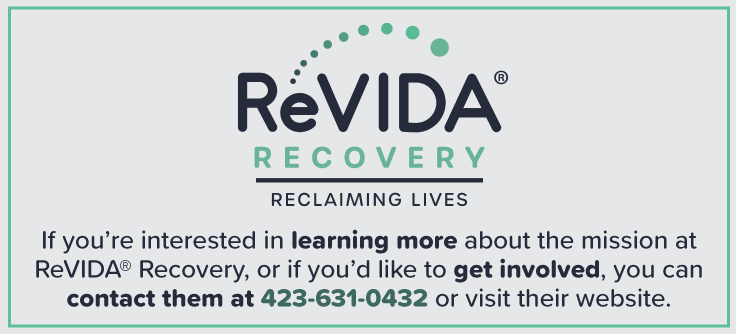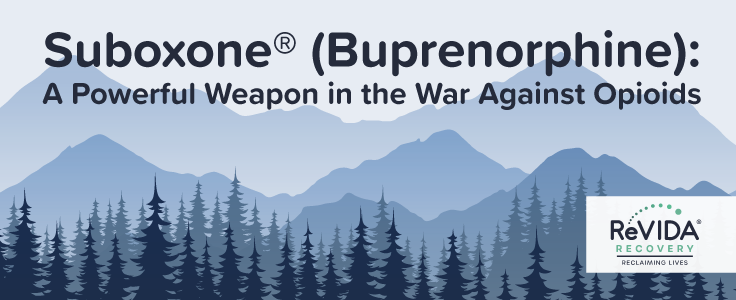
“I went to the woods because I wished to live deliberately, to front only the essential facts of life, and see if I could not learn what it had to teach, and not, when I came to die, discover that I had not lived. I did not wish to live what was not life, living is so dear; nor did I wish to practise resignation, unless it was quite necessary. I wanted to live deep and suck out all the marrow of life.”
Henry David Thoreau
There’s no place like Appalachia. With its sprawling and wild forests, majestic blue ridge mountains, hauntingly beautiful folk music, and vibrant, unique culture, not many regions in the United States (or the world) quite compare. People who visit here often find themselves dreaming about it when they leave. Families who live here raise their children with strong, adventurous values they’re proud of.
Here is something you may not know: underneath its lush beauty and irresistible charms, a war is quietly raging on in Appalachia, and it’s one that ReVIDA® Recovery is dedicated to fighting.
Table of Contents
The War Against Opioids
Appalachia, a vast cultural region spanning over 420 counties, has an overwhelming overdose mortality rate that is 72% higher than the rest of the United States. This isn’t a coincidence – there are many factors to blame for these statistics. Let’s take a look at a few of them.
Poverty
A lack of adequate education in Appalachian communities continues to affect the poverty rate. Over 15% of the Appalachian population is currently living in poverty – a 4% increase from the rest of America, which has a poverty rate of 11.4%. The combined income of many families in this region is at or below $50,000, which might pay the rent and keep the lights on, but leaves little room for healthcare, college tuition, or smart investments.
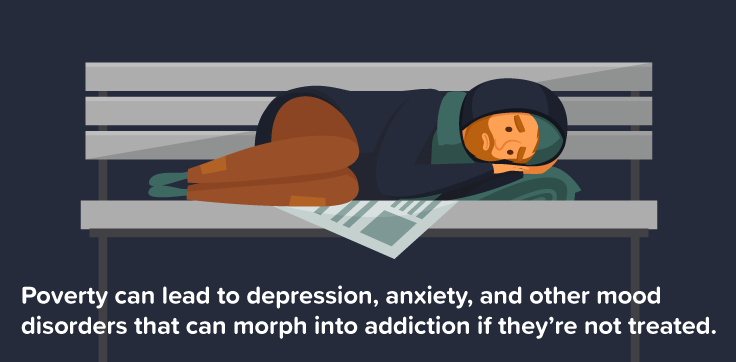
In many cases, poverty leads to depression, anxiety, and other mood disorders that can morph into addiction if they’re not treated. For some, poverty also means chronic health issues or injuries that (they feel) cannot be tended to because of expensive services. Injury and illness are also risk factors for addiction – people are more likely to reach for illicit opioids if they’re in pain and can’t get medical help. While some hospitals and facilities offer payment plans or take Medicaid for insurance in Appalachia, these places aren’t always close in proximity to the people in need. Some people have no way of getting treatment, especially if it’s a lengthy commute from where they live.
Occupational Hazards
Over 39,429 Americans work in the coal mining industry, and most of them reside in Appalachian communities. 75% of those people work in sub-standard underground conditions where lifelong disabilities are common. Mental health conditions like PTSD can be caused by traumatic injuries, entrapment, family separation, and more. These mental health conditions can lead to the development of OUD. Some common and chronic injuries in the coal mining industry can also lead to initial prescriptions for opioids, which workers may then misuse as a form of self-medication or simply because addiction has organically developed through regular use.
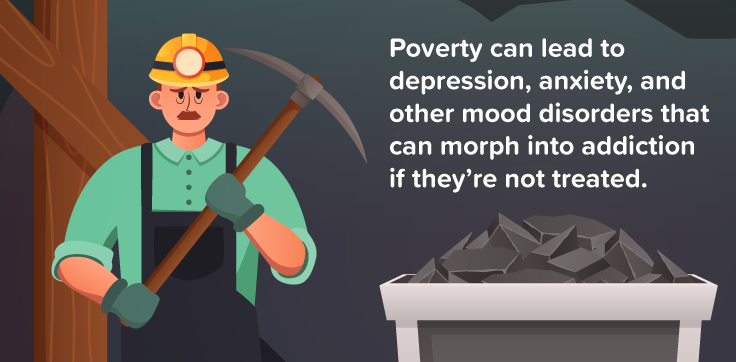
The long shifts commonly required in coal mining occupations (12 or more hours) can also lead to physical and emotional burnout – another risk for OUD. A research letter published in 2021 reported that 34% of all sampled Appalachian coal miners experienced symptoms of major depressive disorders – 11% of those were living with suicidal ideations. 40% of these coal miners were also living with significant anxiety.
Rates of OUD among these coal mining populations are shocking – 11.8% of coal miners currently manage alcohol or opioid use disorders.
Values and Mindsets
Appalachian communities have a strong commitment to self-reliance and independence. In other words, when something goes wrong (like a chronic injury or a mental health condition), people are more prone to handling it themselves rather than seeking out medical care. Many people in these areas believe that something like OUD can be solved quickly by simple abstinence, while others believe that if they developed a dependence on opioids, they’d be judged for seeking help.
Suboxone®: The Sword We Wield Against OUD
The fact of the matter is that some methods, such as traditional 12 step programs, don’t work for everyone. Medication is often needed for managing withdrawals, cravings, relapse, and overdose. Suboxone® (buprenorphine) is one of the best weapons we have against the opioid crisis because it has been clinically proven to help with all of these stumbling blocks. It’s also FDA-approved in the treatment of OUD – something that is often overlooked.
For many, the ultimate goal is abstinence, and Suboxone® (buprenorphine) supports that. When used through medication-assisted treatment or even as a part of a long-term maintenance plan, it can be monitored and patients can be tapered down at their convenience. It gets patients away from illicitly obtained opiates and it has a “ceiling effect”, preventing patients from overdosing or getting too “high” from it. It’s considered to be a safe and controlled way to give patients a leg up into a healthier lifestyle. A patient staying on a prescription opioid for OUD is no different than someone taking insulin for diabetes.
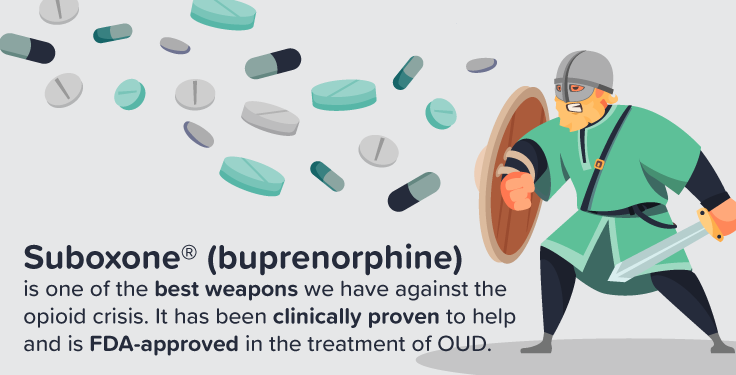
Many in the medical field, including the clinicians at ReVIDA® Recovery, support the use of Suboxone® (buprenorphine) because they’ve seen it work firsthand. So what’s the problem? Why are the addiction rates so high in Appalachian communities if there is a valuable solution at their fingertips?
Suboxone® (buprenorphine) may be evidence-based with the FDA’s stamp of approval, but there is still a stubborn and powerful barrier preventing adequate treatment: stigma. Local pharmacies, AA/NA groups, friends, and family are all integral to someone’s recovery. Patients with a strong support system are far more likely to stay motivated and succeed. Unfortunately, many of the people or places patients rely on during recovery don’t support the use of Suboxone® (buprenorphine) for OUD. Let’s take a look at some of the popular misconceptions that fuel this lack of support.
Stigma’s Fuel: The Misconceptions Surrounding Suboxone®
- Suboxone® (buprenorphine) is just “substituting one drug for another.” This popular misconception is born from an abstinence-only train of thought. Many believe that the only way to find healing and wellness is to stop taking all substances completely, including prescribed medications like Suboxone. Over the years, through research and experience, we’ve learned that this method of treatment simply does not work for each patient. For some, withdrawal symptoms and cravings can be so severe that it leads to relapse – or worse – overdose. “Families sometimes believe it’s swapping one drug for another. We walk them through what challenges come with shaming treatment vs. supporting treatment,” says Erik Miller, the Regional Vice President of Operations for ReVIDA® Recovery. “[There is] significant stigma here because there hasn’t been a positive perspective on MAT (medication-assisted treatment). But in MAT, you’re able to see patients regain a stability in their life that they haven’t had… they finally have the support they didn’t have before.”
- Suboxone® (buprenorphine) is basically “giving up” on sobriety. Another misconception is that Suboxone® (buprenorphine) isn’t a treatment for OUD, it’s a band-aid or a crutch that prevents people from becoming fully sober. Something that’s often overlooked is that Suboxone® (buprenorphine) is almost always prescribed alongside a treatment program or a recovery plan. When prescribed in MAT, patients meet with physicians and counselors regularly to track progress and monitor the medication’s effects. Patients and clinicians come together to create healthy, attainable recovery goals, and Suboxone® (buprenorphine) is used as a tool in that process. A randomized trial published in The Journal of the American Medical Association (JAMA) shows improved patient outcomes in those who took Suboxone® (buprenorphine) during treatment, compared to those who chose detox or traditional 12 step methods.
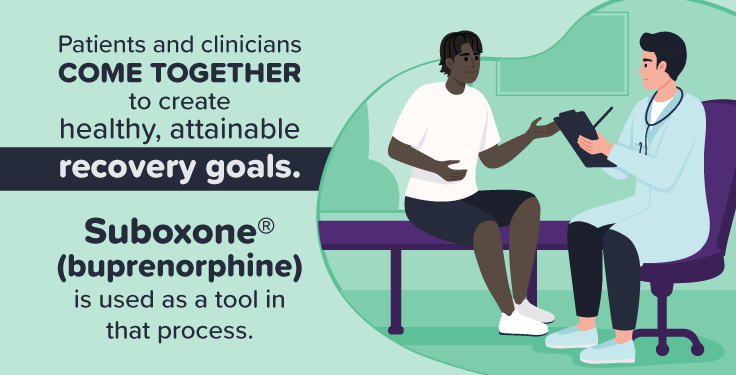
- Suboxone® (buprenorphine) gets you high. Suboxone® (buprenorphine) is a partial opioid agonist, which means it activates opioid receptors in the brain, but to a much lesser degree than opioids themselves. It is rare for people to get “high” off of this medication, especially if they’ve been using illicit opioids, which are much stronger. Suboxone® (buprenorphine) also has a ceiling effect, meaning any euphoria it incites has a limit. Once a person has taken their prescribed dosage of Suboxone® (buprenorphine), taking more will not make them “more high.” This works to prevent overdose, as the patient is aware that they cannot reach the same levels of euphoria achieved by illicit opioids – no matter how much Suboxone® (buprenorphine) they take.
- Suboxone® (buprenorphine) won’t work with recovery groups like AA/NA. It’s true that many AA/NA groups are still unsupportive of the use of Suboxone® (buprenorphine) in treatment. However, facilities like ReVIDA® Recovery are working to educate community members about the research behind Suboxone® (buprenorphine). AA/NA are primarily abstinence-based groups, meaning their main support lies in total abstinence. This is changing in some areas, and with time, the hope is that these groups will support all methods of recovery, including harm reduction. That being said, there are many other recovery groups outside of AA/NA that support the use of Suboxone® (buprenorphine), including SMART Recovery and Women for Sobriety. Additionally, many facilities, like ReVIDA® Recovery, offer in-house recovery groups that support harm-reduction methods of treatment.
- “Addicts” will only sell Suboxone® (buprenorphine) for their drug of choice. If a patient is enrolled in a MAT program, clinicians will often test to make sure the patient only has drugs prescribed in their system. In other words, a patient’s physician will quickly know if they have not been taking their Suboxone® (buprenorphine).
Stigma Is the Enemy – And We’re Ready to Fight
ReVIDA® Recovery has made it their mission to actively fight the stigma surrounding harm-reduction methods of treatment – not just community-wide, but with each and every patient, family member, and inquiring mind they meet. They put their efforts into fighting stigma because they know how powerful it can be and how many lives it can take. They also know how many lives can be saved through MAT and through the use of Suboxone® (buprenorphine).
ReVIDA® is a company that cares deeply about practicing evidence-based methods of treatment and executing those methods with compassion. To win the war on opioids, the battle of stigma must be waged – and ReVIDA® Recovery is one of its key warriors.
Here are some of the ways ReVIDA® Recovery has been fighting each stigmatic battle behind the scenes:
The Battle of Finding Group Support
When patients get a prescription from a trusted physician, they should be able to easily gain access to that prescription through their pharmacy, talk about their medication with their AA/NA support group, and confide in friends and family. Many times, patients don’t feel comfortable doing this. “The greatest misunderstanding about [Suboxone] lies with pharmacy staff and some community support groups. We hear this from patients all the time. Patients are hesitant to go to NA because they feel ostracized for taking Suboxone. Halfway houses will sometimes say if you’re taking Suboxone you’re not sober. If the pharmacy techs or pharmacists assume people are addicts because they take Suboxone, [or] they feel like they have to watch the patient because they might steal something,” says Randy Durbin, ReVIDA® Recovery’s Statewide Medical Director. While the Americans with Disabilities Act states that halfway houses must admit people with Suboxone® prescriptions, that doesn’t always prevent stigmatic mindsets in this community.
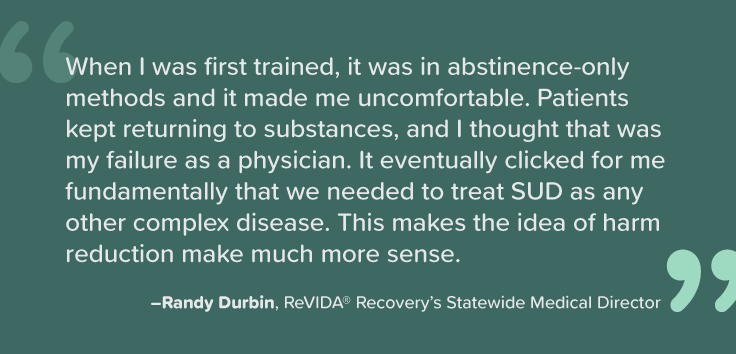
Randy works to make sure ReVIDA®’s policies are upheld at all of their locations throughout Tennessee and Virginia. He works with hundreds of patients, doctors, and nurse practitioners yearly, and he is used to the stigma that comes with Suboxone® (buprenorphine) prescription or any harm reduction methods of treatment. “When I was first trained, it was in abstinence-only methods and it made me uncomfortable. Patients kept returning to substances, and I thought that was my failure as a physician. It eventually clicked for me fundamentally that we needed to treat SUD as any other complex disease. This makes the idea of harm reduction make much more sense.”
Randy goes on to discuss the ways in which ReVIDA® Recovery works to make sure everyone in recovery can find the group support they need: “We in-house many of these services that the patient will encounter that kind of stigma. We can’t control what is said in those hours (AA) so we provide our own to help guide counseling sessions. So patients can attend without the fear of stigma.” The support groups held at ReVIDA® are all guided by counselors and work to give the patient all of the emotional support they need to move forward in their recovery. Patients in these groups talk through the stumbling blocks they encounter while finding comfort and support in one another – a necessary component of effective treatment.
The Battle of Finding Pharmaceutical Support
As mentioned earlier, patients need to be able to pick up their prescriptions for Suboxone® (buprenorphine) comfortably, without the fear of judgment. The fact that some patients encounter stigmatic mindsets from their own pharmacists or pharmacy technicians is unacceptable. A judgemental comment or even a disapproving look from a pharmacist is enough to deter a patient from picking up their prescriptions.
This is a large reason why ReVIDA® Recovery places so much importance on community relationships – especially relationships with their local pharmacies. “We are actively working to utilize strategies like sticking with one pharmacy who understands our mission so patients don’t need to come across [stigma],” said Erik.
Randy Durbin also had something to say on the topic of pharmaceutical and group support: “What I attempt to do is educate all parties involved. The way I treat patients with substance use disorders is the same way I’d treat someone who is living with diabetes. They both deserve the same scrutiny and compassion. When people realize how ridiculous it would be to stigmatize something like uncontrolled diabetes or type 1 diabetes, once you’ve pointed out those analogies, it promotes understanding. Medication for diabetes… medication for SUD. This is fact-based.”
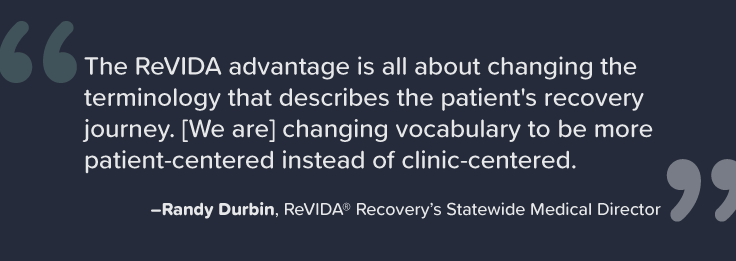
The Battle of Finding Familial Support
A lot of times, when it comes to family stigma, the battle centers simply around education. Stigma can be passed down from generation to generation, and community stigma filters down into its families. The families of those seeking treatment may just be unaware of the research behind Suboxone® (buprenorphine). The truth about families is that most of the time, they want to support their loved one and they’re willing to do whatever it takes – including listening to clinicians and therapists on the topic of treatment.
This is why ReVIDA® Recovery sits down with each and every family member involved in their loved one’s treatment to discuss how treatment has evolved, and how recovery doesn’t always happen immediately or the way they might think. Sometimes it’s as simple as talking about the language used. Words like “addict” or “user” are now outdated when it comes to discussing someone’s journey with opioids.
”The ReVIDA advantage is all about changing the terminology that describes the patient’s recovery journey. [We are] changing vocabulary to be more patient-centered instead of clinic-centered,” said Randy.
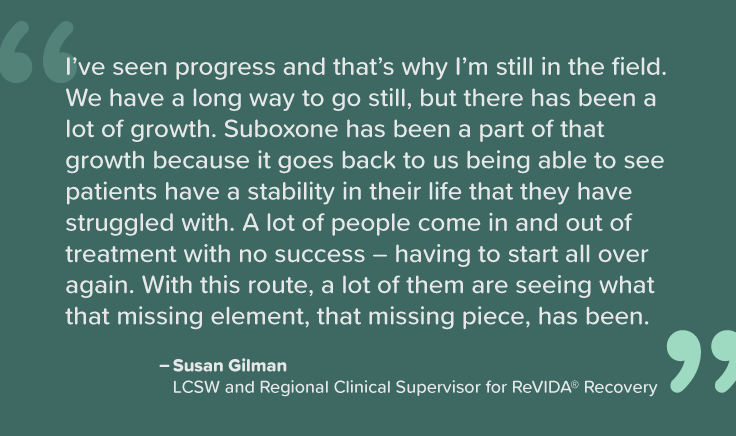
With War Comes Progress
Despite the disappointment that comes with stigma’s continued attacks, the war on opioids is still producing positive changes. The medical community has seen some of that progress firsthand. Susan Gilman, LCSW and Regional Clinical Supervisor for ReVIDA® Recovery, believes there has been significant progress since she started working in the field of behavioral healthcare.
“I’ve seen progress and that’s why I’m still in the field. We have a long way to go still, but there has been a lot of growth. Suboxone has been a part of that growth because it goes back to us being able to see patients have a stability in their life that they have struggled with. A lot of people come in and out of treatment with no success – having to start all over again. With this route, a lot of them are seeing what that missing element, that missing piece, has been,” she states. “I came from a lot of abstinence-based programs and I saw so much relapse. So for me to see those changes, especially since being here at ReVIDA, has been another good reminder from a clinician’s perspective of the changes that can happen because of the MAT support.”
Susan believes that ReVIDA® continues to play a role in the progress that’s happening with harm-reduction programs. “We are living every day what our mission statement is – which is to be a part of the change of meeting patients where they are. I see changes. Our patients show up and they keep coming back. I think that’s a telltale sign that we’re doing what we need to be doing. We have so many people who have a true passion and desire to meet patients where they are, teaching them healthy coping skills, modeling what healthy relationships look like. In spite of everything you’ve gone through, you can manage addiction. It’s exciting every day to walk into those options.”
ReVIDA® Recovery: Waging the War Against Opioids One Patient at a Time
“The mission at ReVIDA sounds like a non-profit, but the efficiency in which we modify the way we treat patients is absolutely at the cutting edge of a for-profit. Compassion, mission, efficiency, and growth opportunity – all of these things drew me to ReVIDA.”
Randy Durbin, D.O., Statewide Medical Director for ReVIDA Recovery®, Tennessee
We call it “The War Against Opioids.” Not because it is a widespread issue that’s impacting our healthcare system and our workforce. Not because it’s impacting our legal system by putting people in jail and taking them away from their families. Not because it’s expensive. Not even because it is causing (or worsening) poverty. All of these things are true – but no, this isn’t why we call it “The War Against Opioids.”
We call it “The War Against Opioids” because it’s taking thousands of lives every year.
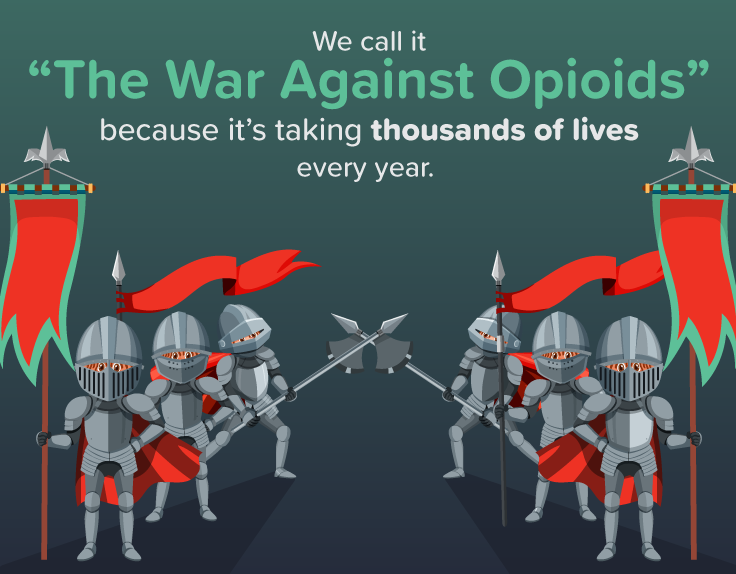
Not everyone heals the same way, and “immediate sobriety” or “abstinence only” methods don’t always work. It’s time to embrace different methods of treatment, especially when they’re evidence-based and FDA-approved. ReVIDA® Recovery believes that MAT and Suboxone® (buprenorphine) are two very powerful weapons in this war; they need to be destigmatized so they can be utilized when appropriate.
Appalachian communities are on the frontline of this war, and they’re taking more damage than we ever thought possible. Appalachia should not have overdose mortality rates that are 72% higher than the rest of the nation. It’s time to change these statistics. Let’s do it together by accepting evidence-based methods of treatment and allowing patients to choose the recovery path that works best for them.
If you’re interested in learning more about the mission at ReVIDA® Recovery, or if you’d like to get involved, you can contact them at 423-631-0432.

